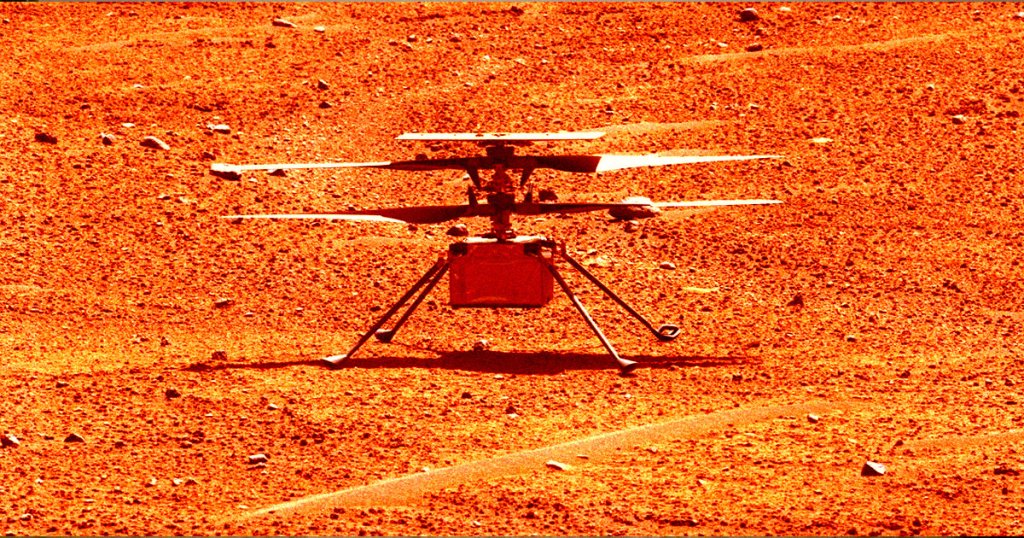It took a beating during its last flight.
Rotor Damage
Last week, NASA announced that its historic Ingenuity helicopter, which had taken flight on Mars an incredible 72 times since its maiden voyage in April 2021, had died.
The agency’s Jet Propulsion Lab shared pictures following the rotorcraft’s final flight, showing some gnarly damage — via the shadow its shattered rotor casts on the unearthly landscape.
One picture even appears to show a small piece of the rotor lying on the dusty ground nearby.
You can also see the damage in a series of image strung together into a video:
Tenemos una secuencia parecida con la cámara a color#Perseverance rover mission#NASA‘s #Ingenuity #Mars #Helicopter
high-resolution color cameraJan. 26, 2024 Sol 1043 https://t.co/zIhn3jIC3n
Image Credit: NASA/JPL-Caltech/j. Roger https://t.co/qTZ5qJGWhh pic.twitter.com/RwpSK2jK3s
— landru79 (@landru79) January 29, 2024
“While the helicopter remains upright and in communication with ground controllers, imagery of its January 18 flight sent to Earth this week indicates one or more of its rotor blades sustained damage during landing and it is no longer capable of flight,” NASA wrote in its statement.
It’s an unfortunate end to a groundbreaking mission, which proved once and for all that we’re capable of taking flight on a distant planet.
Coaxial Copter
It’s a technological marvel that the four-pound helicopter lasted as long as it did. Its rotor blades were made of carbon fiber and arranged into two four-foot-long, counter-rotating rotors, which could spin up to around 2,400 revolutions per minute.
Thanks to the thin Martian atmosphere, the rotors had to spin roughly ten times as fast as they would have needed to back on Earth.
Scientists carefully fine-tuned the blades over years of testing, adjusting their weight and size while accommodating the extreme temperature swings and wind gusts on the Martian surface.
And given Ingenuity’s incredible track record, their hard work clearly paid off. Originally intended as a technology demonstration, the rotorcraft was designed to fly up to five times over 30 days. In April 2021, it became the first manmade object to achieve powered, controlled flight on the surface of another planet, following up its maiden voyage with a dazzling total of 72 flights.
“The historic journey of Ingenuity, the first aircraft on another planet, has come to end,” said NASA administrator Bill Nelson in a statement, commemorating the spacecraft’s achievement. “That remarkable helicopter flew higher and farther than we ever imagined and helped NASA do what we do best – make the impossible, possible.”
More on Ingenuity: NASA’s Mars Helicopter Has Died

